Vol. 1 / Issue 8
Print Tips: Paper Stock Choices
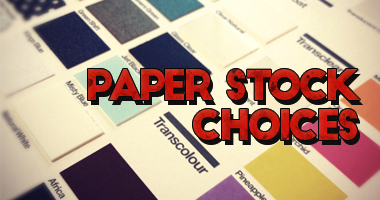 The choice of the right paper and finish for your project can make all the difference. There are three main factors that effect key differences between papers: finish, weight and opacity.
The choice of the right paper and finish for your project can make all the difference. There are three main factors that effect key differences between papers: finish, weight and opacity.
It is normal practice to specify the 'thickness' of paper by its weight in pound per square inches. As papers are graded by weight, one manufacturer's 100# text paper may seem slightly bulkier or thicker than a competitor's product. Also uncoated papers tend to be bulkier than their coated counterparts, whilst matte and silk coated papers tend to bulkier than their gloss coated counterparts. The basis weight refers to the weight in pounds of 500 sheets of paper when it has been cut to that paper's standard basic size. For example the basic size for Bond paper is 17 x 22 inches. If 500 sheets (a ream) of Bond is cut to its basic size of 17 x 22 inches and weighs 20 pounds, it is classified as 20 lb. bond. If a 17 x 22" ream of Bond paper weighed 24 pounds it would be called 24 lb. Bond, and so on.
What's A Finish?
Finish refers to the texture, feel and appearance of a paper. Some common finishes are listed below.
Coated. A paper with a waxy finish (shiny or matte) on both sides.
Uncoated. A paper with an untreated surface that is dull and unreflective.
Coated One Side. A cover stock that is shiny on one side and dull on the reverse side.
Wove. A smooth uncoated surface.
Laid. A paper that is manufactured with textured lines on its surface. This finish is used mostly for business stationery elements, like letterhead, envelopes and business cards.
Linen. Similar to a laid finish, this paper has textured lines on the surface of the sheet, but they are finer and more regular than those that appear on a laid finish stock. This paper is also used frequently for business stationery.
Laser. A paper, which is guaranteed to be compatible with laser printers.
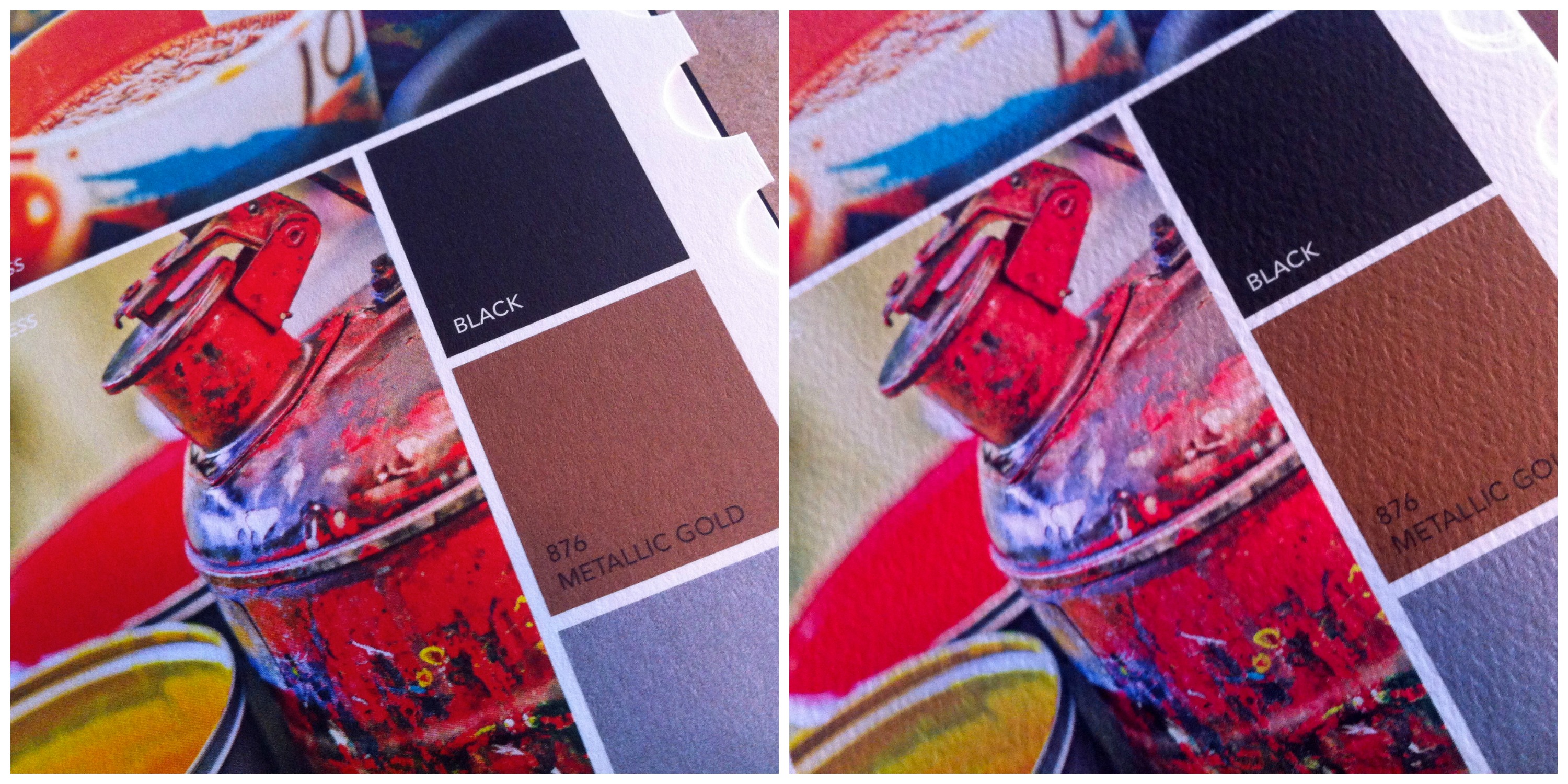
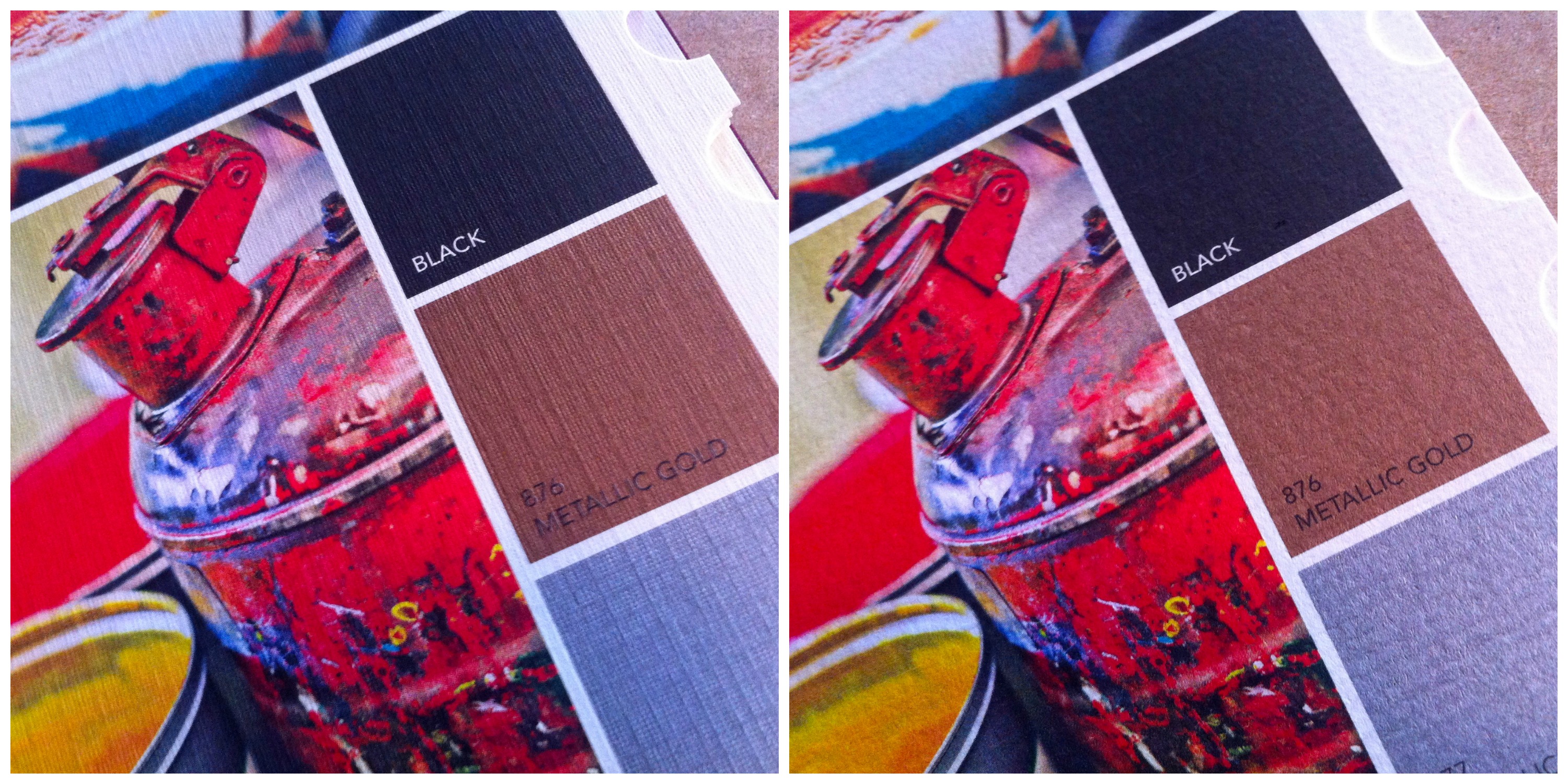
Above is 4-color and metallics printed on smooth, felt, laid and linen.(Clockwise from upper left).
Each finish affects print differently.
The weight of a paper refers to its thickness and is measured in pounds. Generally the higher the number, the thicker the paper is. For paperweight, the "#" symbol refers to pounds.
The thickness, ingredients and ink absorbency determine the opacity of the paper. Opacity is important because it affects how much printing will show through on the reverse side of a sheet. If a paper is not opaque enough, images printed on the other side of the sheet may show through and make reading text impossible. Paper with a high degree of opacity is better able to prevent dark images from showing through a page. Opacity is expressed in terms of percentage reflectance. Complete opacity is 100% and complete transparency is 0%.
Gloss vs. Matte
Paper with a gloss finish is smooth and shiny while matte paper is flat with little or no shine. Gloss stock makes colors look smoother, deeper, and richer with great color-contrast. Photo's and graphics tend to look better on gloss stock, while text heavy documents and artwork are often use matte stock.
Text is more easily read on paper with a matte finish. The softer looking dull surface of matte paper provides color contrast and clarity. Unlike glossy paper, matte stock is more forgiving of fingerprints, smudges and dust.

Paper Coating
Coated paper has a waxy finish (shiny or matte). Coated papers are available in a gloss, silk (sometimes called satin) or matt finish and are used for projects requiring a fine finish. Coated paper can give the printed piece a classier look. Note: Do not use gloss if your product will be used for note-taking. Gloss finish is very difficult to write on.
Types of coating:
UV Coating (Ultra Violet): UV coating is a highly protective, ultra-shiny gloss coating. The solvent-free UV coating provides an extremely hard finish that’s chemical and abrasion resistant. It makes details really pop! It can be used on the entire piece or strategically placed on specific areas to make them stand out, such as a logo or photo.
Aqueous: This is a clear water-based coating that is thinner than UV Coating. It provides a medium-gloss surface that deters dirt, fingerprints and scuff marks. It protects pieces such as postcards and brochures as they go through the mail, and business cards as they ride around in people’s pockets.
Coated One Side (C1S): A cover stock that has a coating on one side and is dull on the reverse side. C1S papers are typically used for products like Holiday Cards or Birthday cards where you want the outside to pop with a glossy finish and for the inside to be writable.
Coated Two Sides (C2S): A cover stock that has a coating on both sides. This is typically used for flyers, brochures, booklets, and handouts that will not be written on.
Uncoated: This paper has an untreated surface-resulting in a dull and unreflective look. Uncoated paper is typically used for letterhead, envelopes, and notepads. Premium uncoated paper can also be used to provide an earthier, more personal feel for important Invitations, Announcements, and Thank You cards.
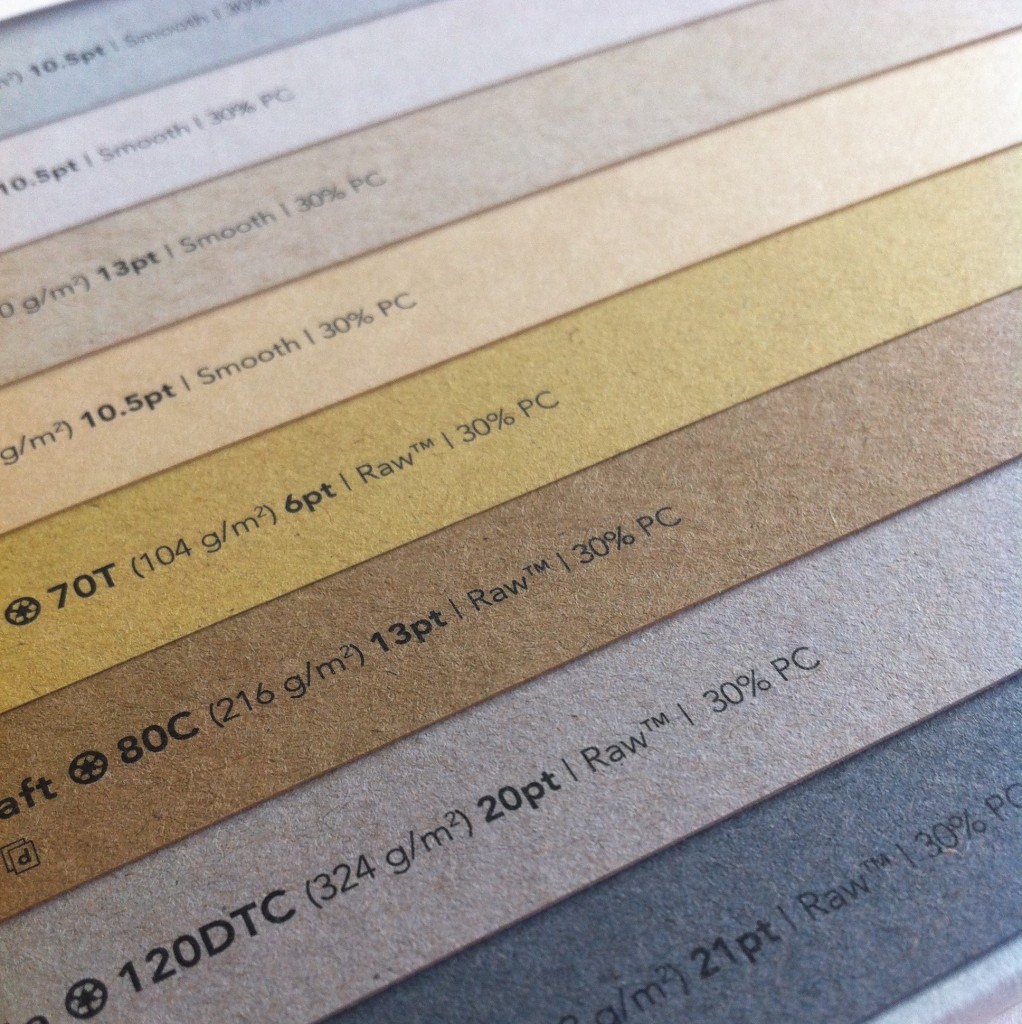
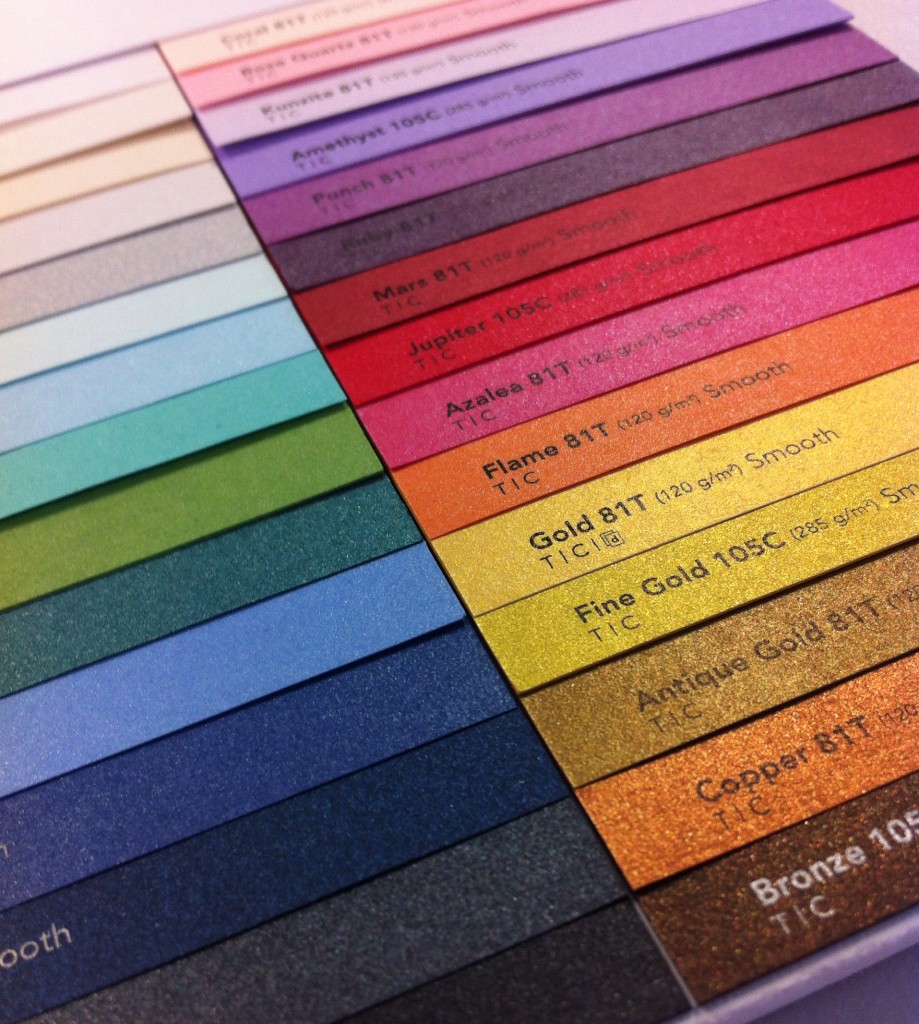
Premium Papers: Neenah Enviromental Raw (left) - Neenah Stardream Metallics (right)
Text, Bond, Cover
There are generally three types of papers for three distinct purposes: text papers, bond or writing papers and cover papers.
Text: Also known as book or offset papers, text paper can have a coated or uncoated finish. These thinner, lightweight papers are often used for publication interiors, sell sheets and letterheads.
Below is a brief description of some of the most common text weights, from lightest to heaviest:
50# - Standard light weight paper, equivalent to 20# bond.
60# - One grade heavier than standard, equivalent to 24# bond.
70# - Equivalent to 28# bond.
80# - brochures, newsletters, catalog inserts, and flyers, etc.
100# - brochures, information sheets, self-mailers, posters, and door hangers.
Bond: Or writing papers are used for letterhead and must be able to run through office copy machines and laser printers.
The most commonly recognized bond or writing stocks are:
20# - A standard weight paper, equivalent to 50# text.
24# - The preferred weight for most business papers like letterheads, equivalent to 60# text.
28# - Heavier paper less frequently used because its thickness can pose problems feeding through laser printers. However, the durability of this stock makes its ideal for outer envelopes.
Cover: These stocks are heavy in weight, rigid and not easily folded. These papers are generally used for publication covers, business cards and postcards. They can have coated or uncoated finishes.
Common weights for cover stocks include:
65# - A lightweight, uncoated cover stock.
80# - The next weight heavier than 65#.
88# - Heavier than 80#, but still considered a lightweight cover paper.
100# - Mid-weight cover paper.
120# - Sturdy cover paper considered a heavyweight.
12 pt. - A heavyweight coated cover alternative.
Generally, glossy papers are used for brochures, product sheets, catalogs, posters, postcards and four-color business cards. Uncoated stock is best for letterhead, envelopes, business cards, newsletters and any document that needs to be fed through a laser printer.
Sometimes the thickness of Cover/Card stock is used instead of its weight. In North America, paper thickness can be displayed in points (1/1000" or .001"). For example, a 10 pt. Card stock is 0.010" thick (about the weight of a 140lb Index stock) while 12 pt. Card stock is 0.012" thick (about the weight of a 100lb Cover stock).
Still not sure about which to use? We can help you select the right paper stock for your project. Call, email or come in today to let our specialists help you!

Phone: 734-663-6816 • Toll-free: 800-696-9627 • Email: Info@advprint.com







